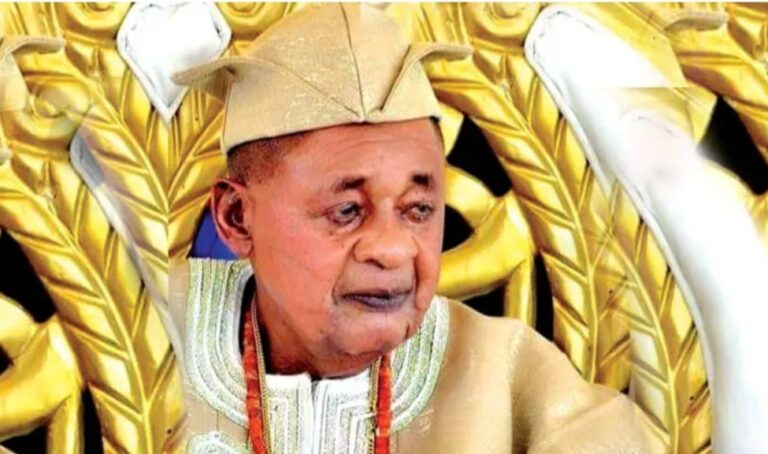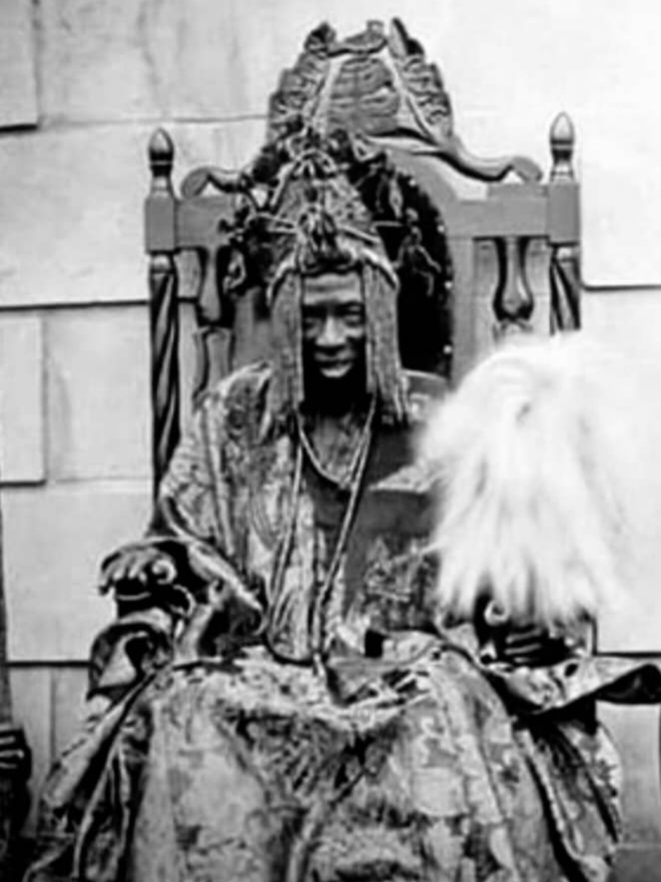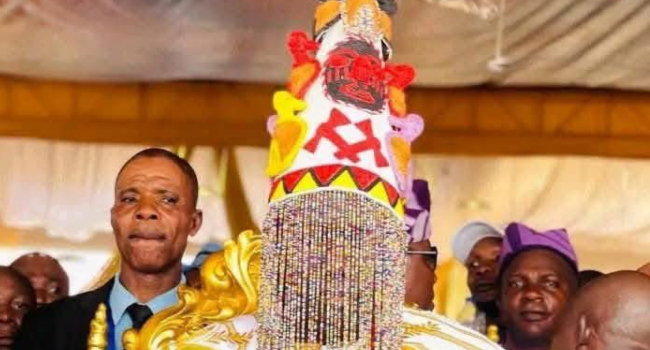The Alaafin of Ọyọ is a revered title in Yoruba history, representing centuries of leadership, tradition, and culture

Full List Of Alaafin Of Ọyọ: Ọwọade, Adeyemi, 44 Other Alaafin Of Ọyọ From c.1000 Till Date
On Saturday, April 5 2025, Ọba Abimbọla Akeem Ọwọade ascends the throne of his forefathers as the Alaafin of Oyo after the demise of Oba Lamidi Adeyemi II, who reigned for over 50 years as one of the most powerful monarchs in the sub Sahara Africa
On Saturday, April 5, 2025, Ọba Abimbọla Akeem Ọwọade will ascende the throne of his ancestors as the Alaafin of Oyo, following the passing of Oba Lamidi Adeyemi III. Oba Adeyemi reigned for over 50 years and was one of the most powerful monarchs in Sub-Saharan Africa.
The Alaafin of Ọyọ is a revered title in Yoruba history, representing centuries of leadership, tradition, and cultural significance within the Ọyọ Kingdom.
From its legendary founder, Ọranyan (also known as Ọranmiyan), to the newly crowned Ọba Abimbọla Akeem Ọwọade on April 5, 2025, the lineage of Alaafin rulers reflects the resilience and evolution of one of Nigeria’s most influential monarchies.
Below is a comprehensive list of the 46 Alaafin of Ọyọ, spanning from around the year 1000 to the present day, based on historical records and oral traditions.
Note that early dates are approximate due to the oral nature of Yoruba history before written documentation, and some reigns lack precise timelines.

1. Ọranyan (c. 1000 – c. 1050) – Founder of the Ọyọ dynasty, a grandson (or son) of Oduduwa, and the first Alaafin. He established Ọyọ as a powerful kingdom after leaving Ile-Ife.
2. Ajaka (c. 1050 – c. 1075)
– A peaceful ruler initially overthrown by his brother Shango, later restored to the throne.
3. Shango (c. 1075 – c. 1085)
– A warrior king, later deified as the Yoruba god of thunder and lightning.
4. Ajaka (restored) (c. 1085 – c. 1095)
– Returned to power after Shango’s death, adopting a more militaristic approach.
5. Aganju (c. 1095 – c. 1120)
– Known for consolidating power and expanding the kingdom’s influence.
6. Kori (c. 1120 – c. 1150)
– Conquered much of what became metropolitan Ọyọ, strengthening its territorial base.
7. Oluaso (c. 1150 – c. 1180) – Noted for a long and prosperous reign, enhancing Ọyọ’s wealth and prestige.
8. Onigbogi (c. 1180 – c. 1210)
– Led the evacuation of Ọyọ-Ile due to external pressures, possibly in the 13th century.
9. Ofiran (c. 1210 – c. 1240)
– Founded the city of Shaki during his reign.
10. Egunoju (c. 1240 – c. 1270)
– Established Ọyọ-Igboho as a new capital after leaving Ọyọ-Ile.
11. Orompoto (c. 1270 – c. 1300)
– Speculated to be a female ruler; introduced military innovations, including cavalry.
12. Ajiboyede (c. 1300 – c. 1330)
– Instituted the Bere festival, celebrating peace and unity.
13. Abipa (c. 1570 – c. 1580)
– Rebuilt Ọyọ-Ile after its destruction, earning the title “Oba Moro” (King who caught ghosts).
14. Obalokun (c. 1580 – c. 1600)
– Strengthened trade networks and centralized governance.
15. Ajagbo (c. 1600 – c. 1658)
– A long-reigning king known for military conquests and administrative reforms.
16. Odaranwu (c. 1658 – c. 1660)
– A brief reign marked by internal strife.
17. Kanran (c. 1660 – c. 1665)
– A warrior king who faced resistance from the Ọyọ Mesi (council of chiefs).
18. Jayin (c. 1665 – c. 1670)
– Struggled with governance amid growing external threats.
19. Ayibi (c. 1678 – c. 1690)
– Worked to stabilize the kingdom during a turbulent period.
20. Osinyago (c. 1690 – c. 1698)
– Focused on rebuilding Ọyọ’s military strength.
21. Ojigi (c. 1698 – c. 1732)
– Expanded Ọyọ’s influence through conquests in Dahomey and beyond.
22. Gbaru (c. 1732 – c. 1738)
– Continued military campaigns, reinforcing Ọyọ’s dominance.
23. Amuniwaye (c. 1738 – c. 1742)
– Faced challenges maintaining control over vassal states.
24. Onisile (c. 1742 – c. 1750)
– Known for his wealth and efforts to bolster the economy.
25. Labisi (1750)
– Reigned briefly before being deposed amid political intrigue.
26. Awonbioju (1750)
– Another short reign, lasting only months, due to instability.
27. Agboluaje (c. 1750 – c. 1772)
– Restored stability and oversaw a period of recovery.
28. Majeogbe (c. 1772 – c. 1775)
– A transitional ruler during a time of shifting power dynamics.
29. Abiodun Adegoolu (c. 1775 – c. 1805)
– One of the most powerful Alaafin, known for prosperity and trade expansion.
30. Aole (c. 1805 – c. 1817)
– His reign saw the beginning of Ọyọ’s decline due to internal dissent.
31. Adebo (c. 1817 – c. 1820)
– A brief reign during a period of chaos.
32. Maku (c. 1820 – c. 1830) – Struggled to hold the empire together amid invasions.
33. Majotu (c. 1830)
– A short-lived ruler during Ọyọ’s weakening phase.
34. Amodo (c. 1830)
– Another brief reign as the empire faced collapse.
35. Oluewu (c. 1830 – c. 1834)
– The last Alaafin of the original Ọyọ Empire, killed during the Eleduwe War.
36. Atiba Atobatele (c. 1837 – 1859)
– Relocated the capital to present-day Ọyọ (Ago-d’Oyọ), reviving the kingdom.
37. Adelu Agunloye (c. 1859 – 1875)
– Son of Atiba; maintained stability in the new capital.
38. Adeyemi I Alowolodu (c. 1875 – 1905)
– Last independent Alaafin before British colonial rule; later a vassal.
39. Lawani Agogoja (c. 1905 – 1911)
– Ruled under British oversight, adapting to colonial changes.
40. Siyanbola Ladigbolu I (c. 1911 – 1944)
– Provided stability during the colonial era.
41. Adeyemi II Adeniran (c. 1945 – 1955)
– Deposed and exiled in 1954 for political affiliations.
42. Bello Gbadegesin Ladigbolu II (c. 1956 – 1968)
– Witnessed Nigeria’s transition to independence.
43. Lamidi Olayiwola Adeyemi III (1970 – 2022)
– Reigned for over 50 years (November 18, 1970 – April 22, 2022), modernizing the throne.
44. Abimbola Akeem Ọwọade (2025 – present)
– Ascended the throne on April 5, 2025, as the 46th Alaafin, succeeding Adeyemi III.
Notes:
– Early Dates: Rulers from Ọranyan to Abipa have approximate dates based on oral traditions, as written records began later. The timeline jumps significantly between Abipa (c. 1570) and earlier rulers due to historical gaps.
– Historical Context: The Ọyọ Empire peaked in the 17th and 18th centuries, declined in the 19th century due to internal strife and external pressures (e.g., Fulani invasions), and was restructured under British rule.
This list encapsulates the enduring legacy of the Alaafin title, from its mythical origins to its contemporary significance under Ọba Abimbola Akeem Ọwọade, crowned on April 5, 2025. Each ruler has contributed to the rich tapestry of Ọyọ’s history, blending tradition with adaptation to changing times.




























![The Statesman’s Return — OGD in the Senate and the Rebirth of Strategic National Leadership [Part 5]](https://newsheadline247.com/wp-content/uploads/2024/07/Gbenga-Daniel-newsheadline247_1-324x160.jpeg)